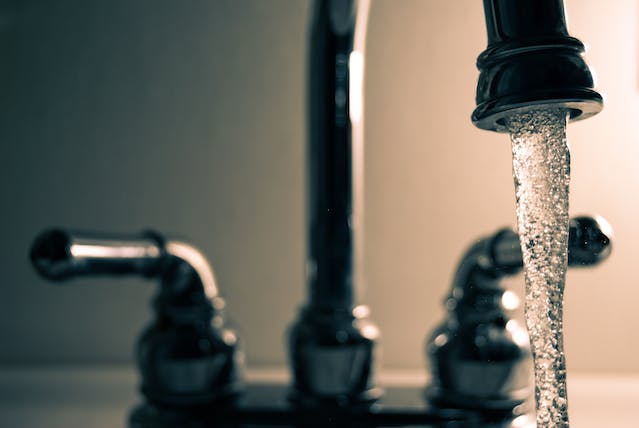
Key Takeaways
-
Time Savings: Regular upkeep helps prevent emergency repairs, saving you time and minimizing disruptions.
-
Reduced Liabilities: Consistent maintenance ensures a safe living environment, decreasing the risk of accidents and potential legal issues.
-
Cost Efficiency: Addressing minor issues early can prevent them from escalating into expensive repairs, ultimately saving money.
-
Property Value Preservation: Ongoing care maintains and can even enhance your property's market value over time.
-
Improved Tenant Retention: A well-maintained property fosters tenant satisfaction, leading to longer tenancies and reduced turnover.
As a landlord, maintaining the long-term value of your investment is crucial. While timely repairs are important, going a step further with preventive maintenance sets you apart, ensuring your property stays in top shape and your tenants remain satisfied.
This proactive approach helps avoid costly repairs, reduces tenant turnover, and protects your property’s value.
In this guide, you'll learn how to implement a preventive maintenance plan, identify common issues before they escalate, and prioritize tasks that preserve your property’s condition and tenant satisfaction.
Central Florida’s Property Management Specialists! Call today: (407) 634-2800
What Is Preventative Maintenance?
Preventative maintenance involves proactive steps by landlords to address potential issues before they escalate into major problems. It focuses on key systems like plumbing, electrical, HVAC, and structural elements, ensuring everything runs smoothly and efficiently.
This approach creates a safer, more comfortable living environment, building tenant trust and improving retention. Well-maintained properties also attract more potential tenants, increasing occupancy rates and rental income.
Benefits of Preventative Maintenance
1. You Can Save Time
Dealing with emergency repairs is time-consuming and often involves lengthy disruption. Regularly maintaining your property and addressing minor issues before they escalate can save substantial time and effort.
By scheduling regular inspections, you can avoid scrambling to make last-minute fixes when problems arise.
2. You Can Reduce Your Liabilities
Landlords have a legal obligation to maintain a safe and habitable living space. Failing to perform regular maintenance can lead to accidents, injuries, or health hazards that might result in legal action.

For example, a neglected plumbing issue could lead to water damage or mold growth, both of which pose health risks. Regular inspections and upkeep reduce the likelihood of these risks and can demonstrate that you’ve made reasonable efforts to maintain the property.
3. You Can Save On Costs
While preventative maintenance requires an upfront investment of time and resources, it ultimately saves landlords money in the long term. Regular inspections allow you to catch small problems before they turn into expensive, time-consuming repairs.
4. You Can Preserve the Value of the Property
A well-maintained property holds its value far better than one that’s left to deteriorate. Regular preventative maintenance helps preserve the property's condition, ensuring that it stays competitive in the rental market.
5. You Can Retain More Tenants
When tenants feel that their needs are being met, and that they’re living in a well-maintained property, they’re more likely to renew their lease.
Preventative maintenance builds trust with tenants, making them feel safe, valued, and comfortable in their homes. This reduces turnover, decreases vacancies, and ensures a steady stream of rental income.
Key Preventative Maintenance Strategies
1. Set an Annual Maintenance Schedule
The first step in any preventative maintenance plan is to establish a clear and organized maintenance schedule.
This includes seasonal tasks that need to be performed regularly to maintain the property’s condition.
2. Prioritize Landscaping and Exterior Maintenance
The first impression of a property is often its exterior, so regular upkeep is essential. Trim the lawn, clear debris, and maintain any trees or shrubs around the property.

Regular exterior inspections should also include checking for signs of wear and tear, like peeling paint or cracked siding, and addressing these issues early to prevent further damage.
3. Respond Quickly to Tenant Repair Requests
Tenants often alert landlords to minor issues that, if addressed quickly, can be fixed before they escalate. Whether it’s a leaky faucet or a malfunctioning appliance, timely responses prevent small issues from becoming expensive repairs and demonstrate that you care about your tenants' comfort.
4. Attend to Pest Control
Pest infestations can be a nightmare for landlords. Regular pest control inspections and treatments help prevent issues with rodents, termites, and insects that could damage the property or create an uncomfortable living environment for tenants.
5. Hold a Plumbing Inspection
Check plumbing systems for leaks, especially under sinks and around water heaters. Early detection of leaks can prevent more significant issues, such as water damage, mold growth, and structural problems. If left unchecked, small leaks can lead to large-scale repairs, so addressing them early saves both time and money.
6. Conduct Hvac Systems Inspection and Cleaning
Your property’s heating and cooling systems should be inspected regularly to ensure they are functioning efficiently. Replace air filters, clean ducts, and schedule annual HVAC system checks to improve energy efficiency, lower utility costs, and increase tenant comfort.
7. Test Smoke and Carbon Monoxide Detectors
The safety of your tenants should always be a priority. Test smoke detectors and carbon monoxide detectors regularly and replace batteries as needed.

By maintaining these safety features, you reduce the risk of fires and carbon monoxide poisoning, keeping your tenants safe and reducing liability.
8. Perform Roof and Gutter Inspections
Inspect the roof for any visible damage or signs of wear. Clean gutters regularly to prevent blockages that could lead to water damage or foundation issues. Ensuring proper drainage helps protect the property from significant water-related problems.
9. Deal With Early Wear and Tear
Small issues, like scuffed walls or worn carpets, should be addressed promptly to prevent them from becoming more significant problems. Minor repairs not only help maintain the property’s aesthetic appeal but also reduce the long-term costs of major replacements.
10. Focus On Fire Safety
Fire safety should always be a top priority for landlords. Ensure that fire extinguishers are readily available, smoke alarms are working, and fire exits are accessible.
Regular inspections of fire safety equipment, such as sprinklers and alarms, help prevent dangerous situations and reduce the risk of liability.
Bottom Line
A proactive maintenance approach protects your investment and fosters a positive living environment for tenants. It reduces repair costs, minimizes liability, and boosts tenant retention.
A well-organized maintenance plan ensures long-term success with fewer vacancies, repairs, and happier tenants.
Contact State Property Management today to learn how we can help keep your rental properties in excellent condition and your tenants satisfied.